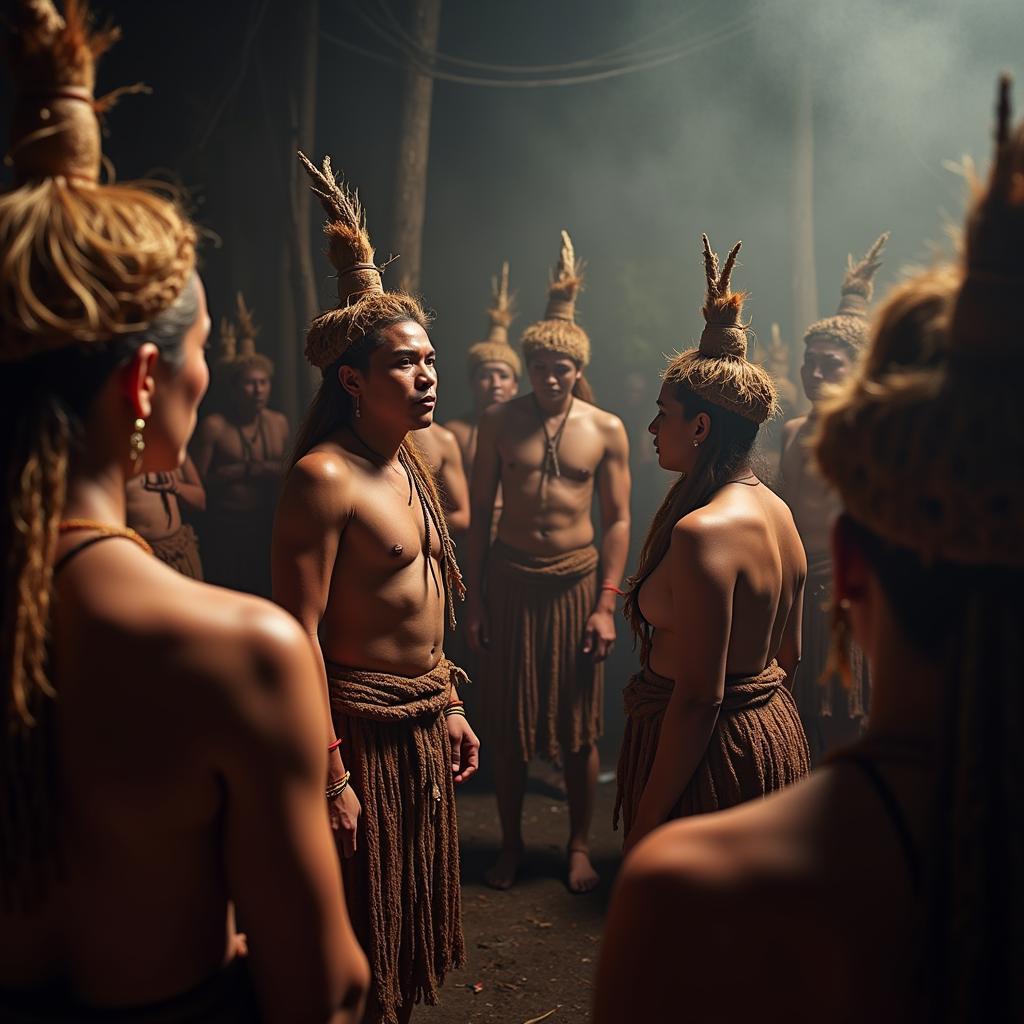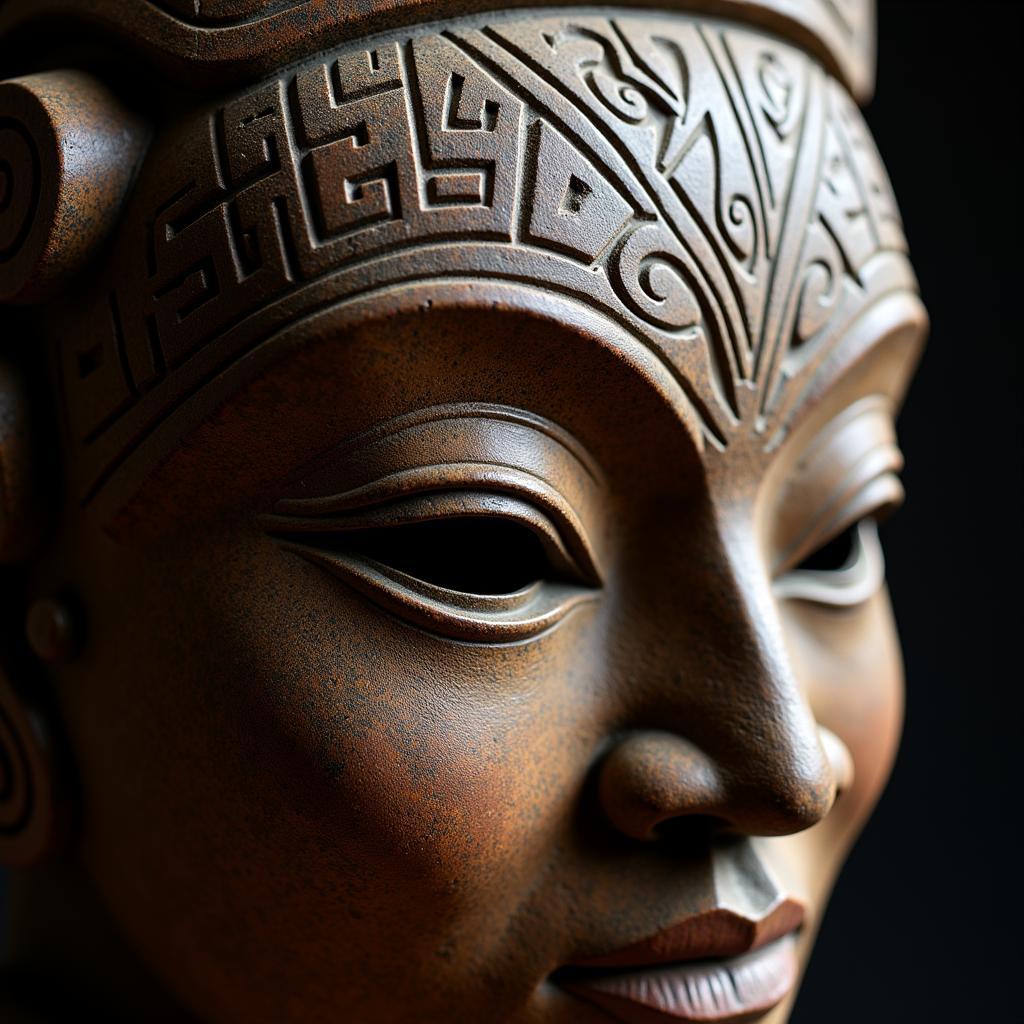Fang masks from Gabon are more than just artifacts; they are powerful expressions of African art, spirituality, and cultural heritage. These striking masks, with their characteristic elongated faces, sharp features, and intricate designs, offer a fascinating glimpse into the world of the Fang people.
Unveiling the Mystery of Fang Masks
For centuries, Fang masks have played a pivotal role in the social and religious practices of the Fang people, primarily inhabiting Gabon and parts of Cameroon and Equatorial Guinea. These masks were not merely decorative objects; they were believed to embody spirits and were used in a variety of rituals, ceremonies, and initiations.
The Significance of Fang Masks in Fang Society
 Fang ritual with masks
Fang ritual with masks
Fang masks were often used in:
- Ancestor Veneration: The Fang people hold their ancestors in high esteem. Masks representing important ancestors were used in ceremonies honoring them, seeking their guidance and protection.
- Initiation Rites: Young men undergoing initiation into adulthood would encounter masked figures representing spirits and ancestors. These encounters were meant to impart knowledge and prepare them for their new roles in society.
- Judicial Proceedings: In some instances, masks played a role in resolving disputes and maintaining social order.
- Funerary Rites: Masks were also used in funeral ceremonies to guide the deceased’s spirit into the afterlife.
The Artistic Beauty of Fang Masks
 Patterns on a Fang mask
Patterns on a Fang mask
Beyond their spiritual significance, Fang masks are celebrated for their aesthetic beauty. Crafted from wood, these masks exhibit a remarkable degree of artistry.
- Elongated Faces: The most striking feature is the elongated, heart-shaped face, often accentuated by a high forehead and a narrow chin.
- Geometric Patterns: The surfaces of the masks are often adorned with intricate geometric patterns, lines, and shapes, adding to their visual appeal.
- Stylized Features: The eyes are typically depicted as narrow slits or coffee bean shapes, while the nose is often long and slender.
- White Pigment: White pigment, traditionally made from kaolin clay, is used to highlight certain features, creating a striking contrast against the dark wood.
Fang Masks in the Modern World
Today, Fang masks are highly sought after by art collectors and museums worldwide. They are recognized not just as ethnographic artifacts but as powerful works of art that reflect the rich cultural heritage of the Fang people. However, it is crucial to approach the collection and appreciation of these masks with sensitivity and respect, recognizing their spiritual significance and cultural context.
Conclusion
Fang masks from Gabon offer a captivating journey into the heart of African art and culture. These masks, imbued with spirituality and artistic brilliance, provide a window into the beliefs, practices, and traditions of the Fang people. They remind us of the power of art to transcend time and connect us to diverse cultures and histories.